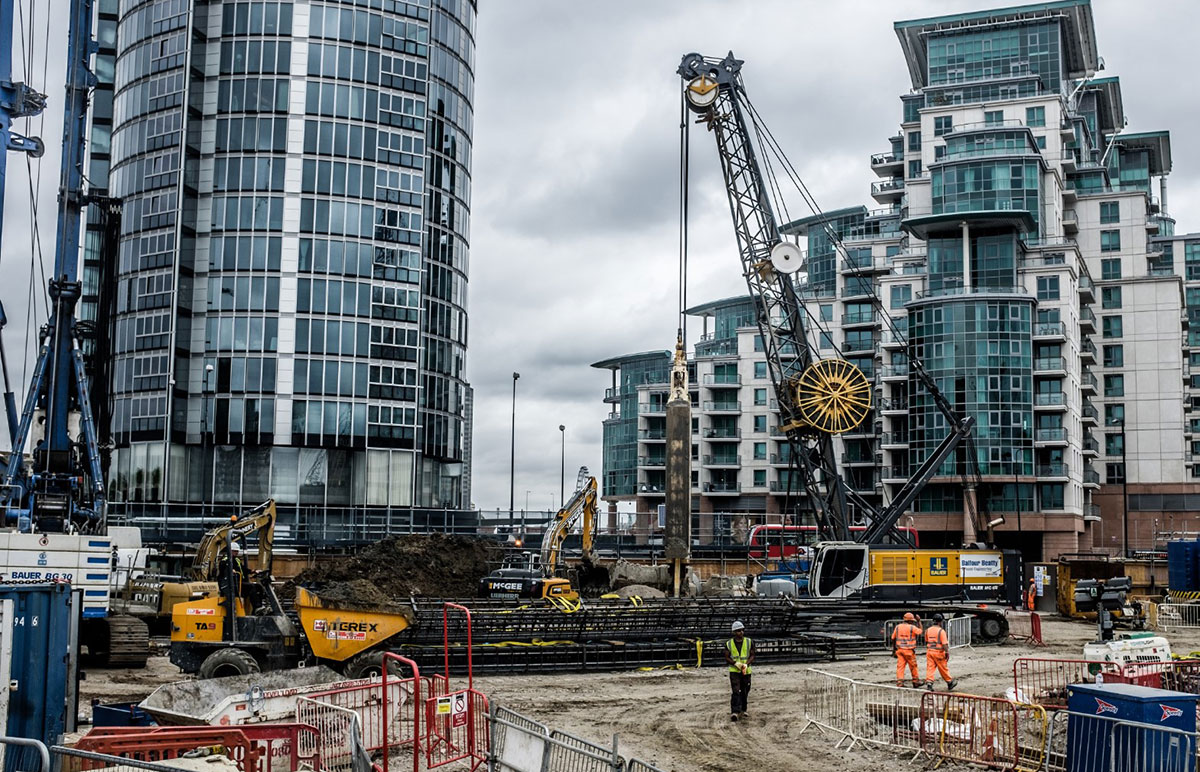3 Simple Techniques For Geotheta
Getting My Geotheta To Work
Table of ContentsUnknown Facts About GeothetaTop Guidelines Of GeothetaThe 30-Second Trick For Geotheta4 Easy Facts About Geotheta ExplainedGeotheta - Questions

They conduct website examinations, accumulate samples, do laboratory examinations, and analyze information to review the viability of the ground for building and construction projects - Geo Tech Engineering. Based on their findings, geotechnical engineers offer suggestions for structure style, incline stability, maintaining frameworks, and reduction of geotechnical threats. They collaborate with other specialists, such as designers, architectural designers, and construction groups, to ensure that geotechnical considerations are integrated into the overall task layout and execution
By analyzing the actions and residential properties of soil and rock, they can identify potential geotechnical threats such as landslides, dirt negotiation, or slope instability. Their competence assists avoid failures or mishaps that might jeopardize lives and property. Here are some comprehensive duties and obligations of a geotechnical engineer: Site Examination: Geotechnical designers conduct website examinations to collect data on subsurface problems.
They interpret the information to comprehend the buildings and behavior of the soil and rock, including their strength, permeability, compaction qualities, and groundwater conditions. Geotechnical Analysis and Layout: Geotechnical designers assess the information accumulated throughout site investigations to examine the stability and suitability of the site for building projects. They perform geotechnical calculations and modeling to review variables such as bearing capacity, settlement, incline stability, lateral planet pressures, and groundwater circulation.
Some Known Facts About Geotheta.
Foundation Style: Geotechnical designers play an important role in making foundations that can securely support the intended structure. They assess the dirt problems and load demands to figure out the ideal foundation type, such as superficial foundations (e.g., grounds), deep foundations (e.g (https://geotheta.bandcamp.com/album/geotheta)., stacks), or specialized strategies like dirt renovation. They think about variables such as settlement limitations, birthing capability, and soil-structure communication to establish ideal structure styles
They review building and construction plans, monitor site activities, and perform field inspections to validate that the design referrals are complied with. If unforeseen geotechnical concerns develop, they assess the scenario and offer referrals for removal or modifications to the design. Risk Assessment and Mitigation: Geotechnical designers evaluate geotechnical threats and dangers associated with the job website, such as landslides, liquefaction, or soil disintegration.

Collaboration and Interaction: Geotechnical engineers function carefully with various other experts included in a task, such as designers, architectural designers, and building groups. Effective communication and cooperation are necessary to incorporate geotechnical considerations right into the total job layout and building procedure. Geotechnical engineers offer technological proficiency, response questions, and ensure that geotechnical needs are met.
Some Known Questions About Geotheta.
Here are some kinds of geotechnical engineers: Foundation Designer: Structure engineers specialize in developing and assessing structures for frameworks. They assess the soil conditions, load requirements, and site qualities to figure out one of the most ideal structure kind and layout, such as shallow foundations, deep foundations, or specialized techniques like pile foundations.
They review the variables affecting incline security, such as dirt residential properties, groundwater conditions, and slope geometry, and develop strategies to prevent slope failings and reduce risks. Earthquake Engineer: Earthquake designers concentrate on analyzing and making frameworks to stand up to seismic forces. They assess the seismic hazard of a website, evaluate soil liquefaction potential, and create seismic design standards to make certain the safety and security and resilience of frameworks during earthquakes.
They execute field testing, accumulate examples, and evaluate the collected information to identify the soil buildings, geologic developments, and groundwater conditions at a website. Geotechnical Instrumentation Designer: Geotechnical instrumentation designers concentrate on surveillance and determining the behavior of soil, rock, and frameworks. They install and maintain instrumentation systems that check aspects such as soil negotiation, groundwater levels, slope movements, and architectural displacements to examine performance and give very early warnings of possible issues.
What Does Geotheta Mean?
They conduct examinations such as triaxial examinations, debt consolidation tests, straight shear examinations, and leaks in Resources the structure examinations to gather information for geotechnical analysis and style. Geosynthetics Designer: Geosynthetics designers concentrate on the style and application of geosynthetic materials, such as geotextiles, geogrids, and geomembranes. They use these materials to enhance dirt security, reinforce slopes, offer drain remedies, and control erosion.
They tend to be investigative individuals, which indicates they're intellectual, reflective, and inquisitive. They are interested, methodical, reasonable, analytical, and rational. Some of them are also social, implying they're kind, charitable, participating, individual, caring, valuable, understanding, skillful, and friendly - Tailings Engineer.
In the office environment, geotechnical designers use specialized software application tools to execute estimations, produce designs, and evaluate information. They prepare records, review project specs, communicate with customers and staff member, and coordinate job tasks. The office setting provides a helpful environment for research, evaluation, and collaboration with various other experts associated with the task.
Geotheta Fundamentals Explained
They frequently see job sites to conduct site examinations, evaluate geotechnical problems, and collect data for evaluation. These gos to entail traveling to various areas, in some cases in remote or challenging surfaces. Geotechnical engineers may execute soil sampling, conduct examinations, and display construction tasks to ensure that the geotechnical elements of the job are being implemented properly.
Geotechnical designers also operate in specialized geotechnical labs. In these centers, they conduct experiments, do tests on dirt and rock samples, and examine the engineering residential properties of the materials. Geotechnical lab designers work thoroughly in these atmospheres, taking care of testing equipment, operating instruments, and videotaping data. They work together with various other research laboratory staff to make certain exact and trustworthy screening outcomes.